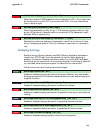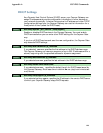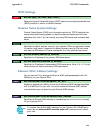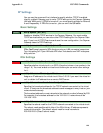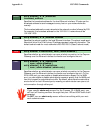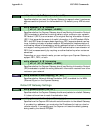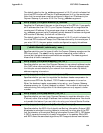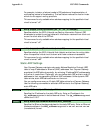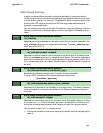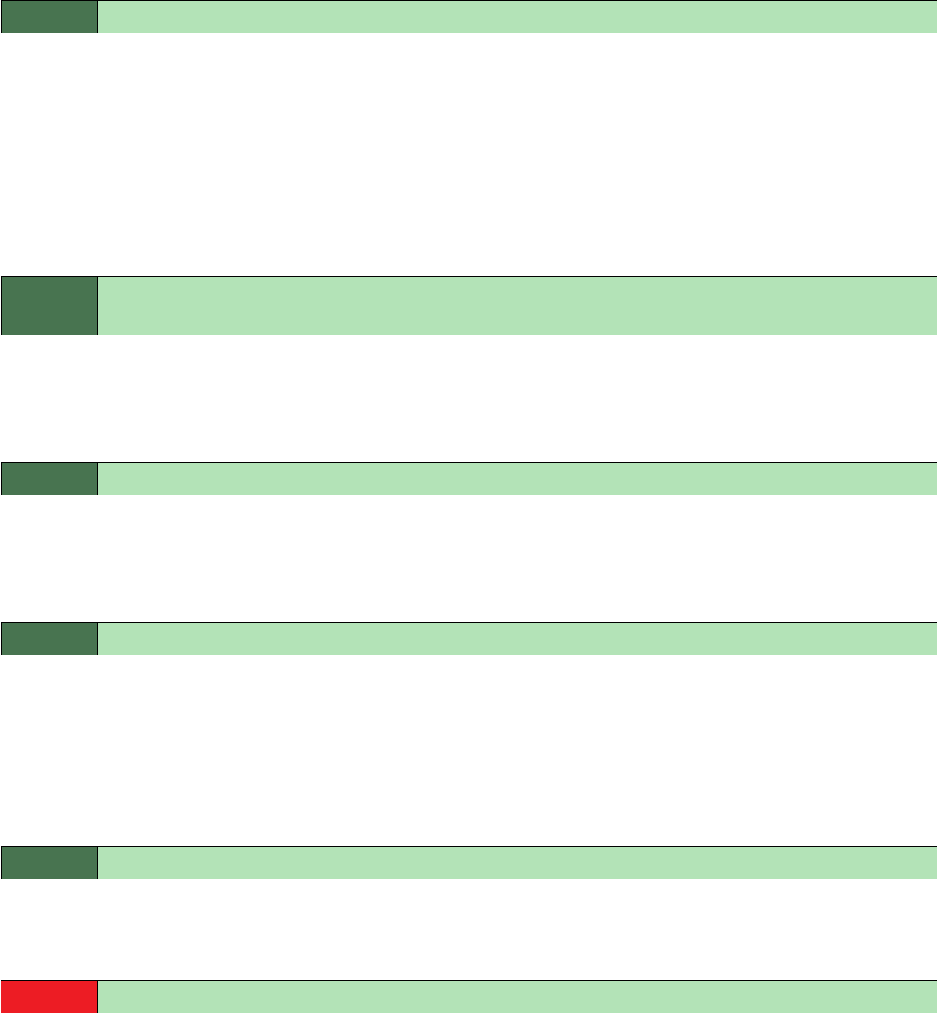
130
Appendix A CONFIG Commands
The default value for the ip_address argument is 0.0.0.0, which indicates that
the virtual PPP interface will use the IP address assigned to it by the remote peer.
Note that the remote peer must be configured to supply an IP address to your
Cayman Gateway if you enter 0.0.0.0 for the ip_address argument.
Specifies the IP address of the peer on the other end of the PPP link. If you specify
an IP address other than 0.0.0.0, your Cayman Gateway will not negotiate the
remote peer's IP address. If the remote peer does not accept the address in the
ip_address argument as its IP address (typically because it has been configured
with another IP address), the link will not come up.
The default value for the ip_address argument is 0.0.0.0, which indicates that
the virtual PPP interface will accept the IP address returned by the remote peer. If
you enter 0.0.0.0, the peer system must be configured to supply this address.
Specifies restrictions on the types of traffic the Cayman Gateway accepts over the
PPP virtual circuit. The admin-only
argument means that router traffic is
ignored but that administrative commands are accepted. The none argument
means that all traffic is accepted.
Specifies whether you want the Cayman Gateway to use network address transla-
tion (NAT) when communicating with remote routers. Network address transla-
tion lets you conceal details of your network from remote routers. By default,
address mapping is turned on.
Specifies whether you want to negotiate Van Jacobson header compression for
asynchronous PPP links. By default, TCP/IP header compression is turned on.
When Van Jacobson header compression is turned on, your Cayman Gateway
allocates memory for 16 slots (headers) by default. The number of slots may be
reduced during link configuration if the remote peer can only support a lower
number.
Specifies whether you want your Cayman Gateway to negotiate allocation of an
IP subnet, rather than a single IP address, from a remote access server. You should
only enable this feature if you are told to do so by your Internet Service Provider.
Specifies whether the 3220-H unit should use Routing Information Protocol (RIP)
broadcasts to advertise its routing tables to routers on the other side of the PPP
link. An extension of the original Routing Information Protocol (RIP-1), RIP Version
2 (RIP-2) expands the amount of useful information in the packets. While RIP-1
and RIP-2 share the same basic algorithms, RIP-2 supports several new features.
BOTH set ip ip-ppp [
vccn
] peer-address
ip_address
BOTH set ip ip-ppp [
vccn
] restriction
{ admin-disabled | admin-only | none }
BOTH set ip ip-ppp [
vccn
] addr-mapping { on | off }
BOTH set ip ip-ppp [
vccn
] vj-compression { on | off }
BOTH set ip ip-ppp [
vccn
] ipcp-subnet { on | off }
DSL set ip ip-ppp [
vccn
] rip-send {off | v1 | v2 | v1-compat}



